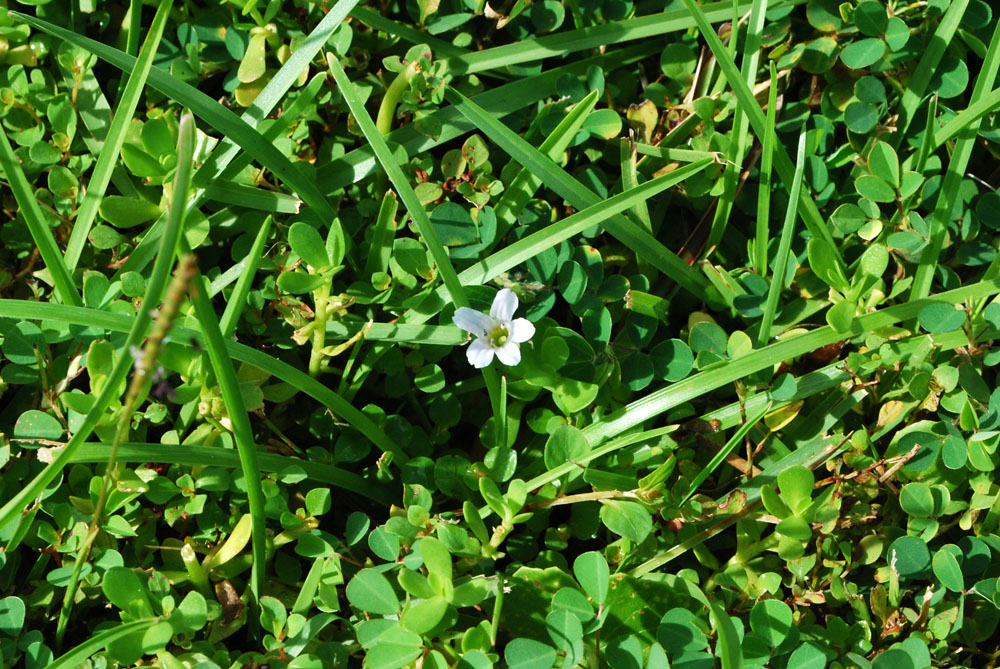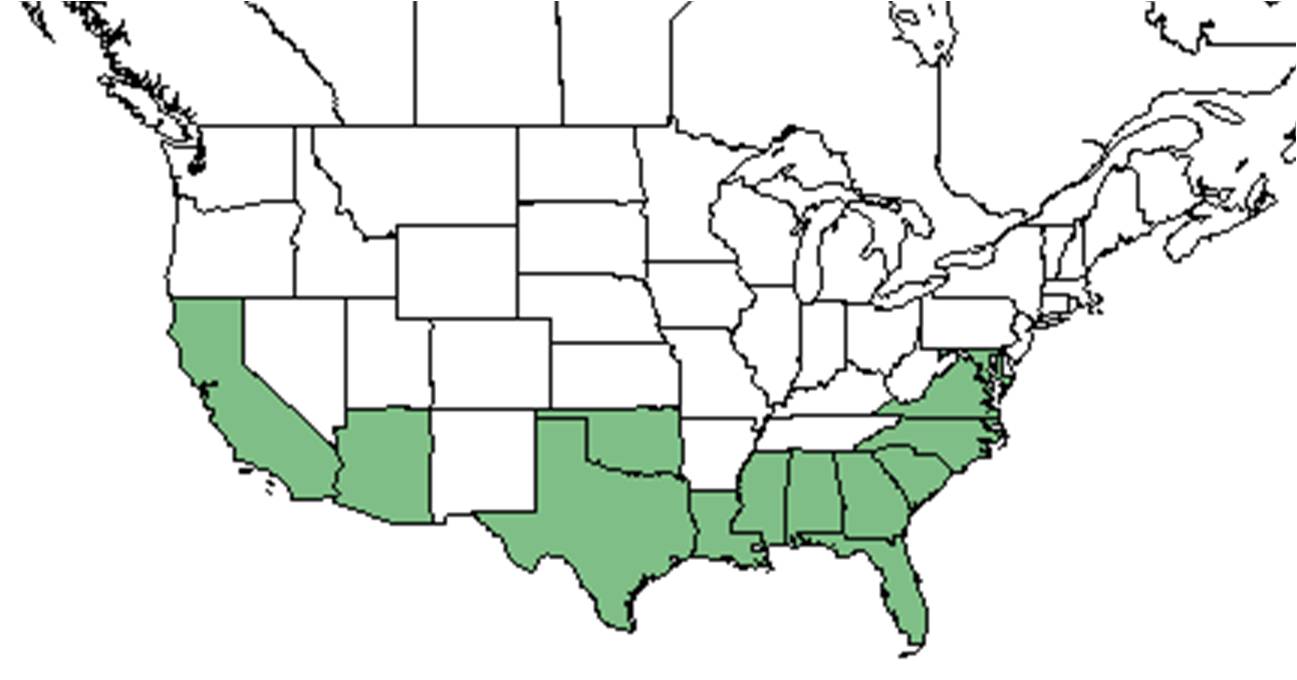Difference between revisions of "Bacopa monnieri"
Emmazeitler (talk | contribs) (→Taxonomic notes) |
|||
| Line 19: | Line 19: | ||
Common names: Herb of grace; Monnier's water-hyssop | Common names: Herb of grace; Monnier's water-hyssop | ||
==Taxonomic notes== | ==Taxonomic notes== | ||
| − | Synonym: ''Bramia monnieri'' (Linnaeus) Drake <ref name= " | + | Synonym: ''Bramia monnieri'' (Linnaeus) Drake. <ref name="weakley">Weakley, A.S. 2015. Flora of the southern and mid-atlantic states. Working Draft of 21 May 2015. University of North Carolina at Chapel Hill, Chapel Hill, North Carolina.</ref> |
| + | |||
| + | Varieties: None.<ref name="weakley">Weakley, A.S. 2015. Flora of the southern and mid-atlantic states. Working Draft of 21 May 2015. University of North Carolina at Chapel Hill, Chapel Hill, North Carolina.</ref> | ||
==Description== | ==Description== | ||
Revision as of 17:55, 4 September 2020
| Bacopa monnieri | |
|---|---|

| |
| Photo by Wayne Matchett, SpaceCoastWildflowers.com | |
| Scientific classification | |
| Kingdom: | Plantae |
| Division: | Magnoliophyta - Flowering plants |
| Class: | Magnoliopsida - Dicotyledons |
| Order: | Scrophulariales |
| Family: | Scrophulariaceae |
| Genus: | Bacopa |
| Species: | B. monnieri |
| Binomial name | |
| Bacopa monnieri (L.) Pennell | |

| |
| Natural range of Bacopa monnieri from USDA NRCS Plants Database. | |
Common names: Herb of grace; Monnier's water-hyssop
Contents
Taxonomic notes
Synonym: Bramia monnieri (Linnaeus) Drake. [1]
Varieties: None.[1]
Description
Baccharis genus are dioecious, glabrous shrubs. They are rarely small trees. The leaves are alternate, fleshy, toothed or entire. The heads pedunculated or sessile, most of the time in 3-5 glomerules. The involucres are cylindric, 4-5 mm long, 2.5-3.5 mm broad. The bracts are imbricate, sometimes purplish in color, and obtuse. The flowers are discoid and yellowish in color. The nutlets are tan in color, lustrous, cylindric, 10-ribbed, glabrous, and 1.2-1.5 mm long. The pappus bristles are white to tan in color. The capillary is 7-10 mm long.[2]
Specifically for B. monnieri, the plant has no smell. The erect portion of the stem is 1-3 dm tall and is glabrous. The leaves are obovate in shape, 6-17 mm long, 3-8 mm wide, and only having a single vein. It is rare to see 2-3 veins. The internodes are longer than the leaves. The pedicel is longer than the subtending leaf. The bractlets are present. The largest sepals grow up to 5-7 mm long, and 3-4 mm wide. The corolla is white in color and sometimes tinged with blue. The corolla is rotate to regular, growing up to 8-10 mm long. The lobes grow to the same size as the tube. There are 4 stamens which are subequal. Flowers from April to frost.[2]
Distribution
Ecology
Habitat
In the Coastal Plain in Florida, B. monnieri has been found in shallow water of a shaded ditch; with Eleocharis flavescens in muck of small floating island in a ditch; sand fill near a salt marsh; and shallow brackish water.[3]
Phenology
B. monnieri has been observed to flower in June and July and fruit in June.[3][4]
Pollination
The following Hymenoptera families and species were observed visiting flowers of Bacopa monnieri at Archbold Biological Station[5]:
Halictidae: Lasioglossum pectoralis, L. puteulanum
Megachilidae: Megachile brevis pseudobrevis, M. georgica
Conservation and management
Cultivation and restoration
Photo Gallery
References and notes
- ↑ 1.0 1.1 Weakley, A.S. 2015. Flora of the southern and mid-atlantic states. Working Draft of 21 May 2015. University of North Carolina at Chapel Hill, Chapel Hill, North Carolina.
- ↑ 2.0 2.1 Radford, Albert E., Harry E. Ahles, and C. Ritchie Bell. Manual of the Vascular Flora of the Carolinas. 1964, 1968. The University of North Carolina Press. 938. Print.
- ↑ 3.0 3.1 Florida State University Robert K. Godfrey Herbarium database. URL: http://herbarium.bio.fsu.edu. Last accessed: July 2015. Collectors: Loran C. Anderson, Karen MacClendon, Travis MacClendon, R.A. Norris, P.L. Redfearn Jr., Nia Wellendorf. States and Counties: Florida: Calhoun, Jefferson, Taylor, Wakulla. Compiled by Tall Timbers Research Station and Land Conservancy.
- ↑ Nelson, G. PanFlora: Plant data for the eastern United States with emphasis on the Southeastern Coastal Plains, Florida, and the Florida Panhandle. www.gilnelson.com/PanFlora/ Accessed: 7 DEC 2016
- ↑ Deyrup, M.A. 2015. Database of observations of Hymenoptera visitations to flowers of plants on Archbold Biological Station, Florida, USA.